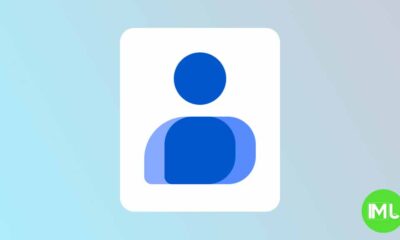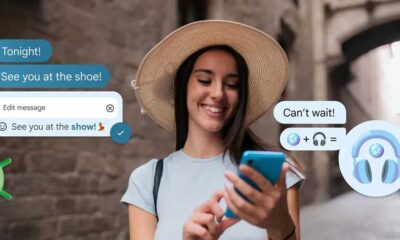Android
Android 15 strengthens security by tightening controls on sideloaded apps

Top 3 Key Points:
- Enhanced Restrictions: Android 15 expands security measures for sideloaded apps, limiting their access to powerful system permissions.
- Focus on User Protection: Google aims to curb malware risks associated with sideloading while still allowing users to bypass restrictions if needed.
- Future Expansions: Android 15 opens the door for more permissions to be restricted in future updates.
One of the key features that make Android different from iOS is the ability to sideload apps, meaning users can install apps from outside the Google Play Store. For many tech-savvy users, this freedom is one of Android’s biggest advantages. However, this flexibility also brings security risks, as hackers often exploit sideloaded apps to spread malware. In response, Google is tightening the rules in Android 15, making it more difficult for sideloaded apps to access sensitive permissions that could compromise user security.
Why Google is Tightening Sideloading Rules
Sideloading apps can be risky because it bypasses Google’s security checks, making it easier for malicious apps to infiltrate devices. To address this, Android 15 builds upon earlier versions by adding stricter controls for sideloaded apps. While some may question Google’s motives—wondering if it’s a move to push users to the Google Play Store—the main goal seems to be protecting users from malware.
It’s also worth noting that these restrictions don’t apply to apps installed from legitimate third-party app stores that use Android’s official app installation API. In short, this new update doesn’t restrict users who rely on safe, alternative app stores.
Android 13’s Security Foundation
Android 15’s changes build on a feature introduced in Android 13 called “restricted settings.” This feature limits sideloaded apps’ ability to request access to certain high-level system permissions, such as accessibility and notification listener APIs. These are among Android’s most powerful tools, often abused by malicious apps to control devices or steal personal information.
In Android 15, this feature is expanded to cover more sensitive permissions, such as access to SMS, device admin, overlay controls, and even roles like default dialer and SMS apps. Google’s goal is to block sideloaded apps from easily gaining control over these critical functions without user knowledge or consent.
How These Changes Affect Users
With Android 15, the system will automatically deny certain permissions to sideloaded apps unless they are installed via approved app stores. However, advanced users who understand the risks can still manually override these settings, providing a balance between security and flexibility.
Google has also made it clear that these protections will likely be expanded in future updates, covering even more permissions. They are encouraging device manufacturers to adopt these security practices and explore additional controls.
Looking Ahead
Android 15 marks a significant step forward in securing sideloaded apps without completely removing the flexibility that Android users value. By expanding restrictions on powerful permissions and maintaining an open door for future updates, Google is reinforcing its commitment to user security while still supporting the open nature of Android.
These changes demonstrate Google’s long-term strategy to protect users from malicious apps while giving knowledgeable users the freedom to make informed decisions about their device security.
Android
Easy ways to change Android Auto’s look with light and dark themes

Android Auto is a helpful tool that lets you use your phone’s apps safely while driving. It connects your phone to your car’s screen, making it easier to use maps, music, and calls. One of the features many people like is the ability to change how Android Auto looks by switching between light and dark themes.
How to switch between light and dark themes
Android Auto offers two main themes: light and dark. The light theme uses brighter colors, which can make the screen easier to see during the day. The dark theme uses darker colors, which can be more comfortable for your eyes at night or in low light.
To change the theme, follow these steps:
- Open the Android Auto app on your phone.
- Go to the settings menu.
- Find the “Theme” option.
- Choose between “Light,” “Dark,” or “Set by car” (this lets your car decide the theme based on the time of day or your car’s settings).
Why themes matter
Using the right theme can make driving safer and more comfortable. The light theme is good for bright days, while the dark theme helps reduce glare at night. Having these options means you can pick what works best for you, making Android Auto easier to use in any condition.
In short, Android Auto’s theme options are simple to use and help you drive more safely by making the screen easy to see, no matter the time of day.
Android
Google’s New Updates: Gemini 2.5 Pro, Android 16 features, and Messages change

Google has just rolled out some exciting updates across its services and apps. Here’s a simple breakdown of what’s new and what it means for you.
Gemini 2.5 Pro is here
Google has launched Gemini 2.5 Pro, the latest version of its AI model. This upgrade brings smarter and faster responses, making it easier for users to get helpful answers. Gemini 2.5 Pro is now available in Google’s AI Studio and Vertex AI, so developers can build even better tools and apps using this technology.
Android 16 brings more customization
Android 16 is adding new ways to personalize your phone. One of the standout features is the ability to hide the clock on your lock screen, giving you a cleaner look if you want it. This is part of Google’s push to let users make their phones feel more unique. There’s also a new animation for the power button, making the experience smoother and more modern when you turn your phone on or off.
Google Messages removes the unsubscribe button
If you use Google Messages, you might notice that the “Unsubscribe” button is gone from some business messages. Google has removed this feature, so users now have to find other ways to stop unwanted texts. This change might make it a bit harder to manage spam, but Google hasn’t said why the option was removed.
What does this mean for you
These updates show that Google is focused on making its products smarter and more personal. Whether you’re using AI tools, customizing your phone, or managing your messages, you’ll see some changes that aim to improve your experience.
Android
Here’s what’s new with Google Keep and Android Automotive apps

Google Keep is getting a fresh look with the new Material You design, making it more colorful and easier to use on Wear OS smartwatches. The update brings bigger buttons and clearer text, so you can quickly jot down notes or check your lists right from your wrist. This makes Google Keep more handy when you’re on the go and don’t want to pull out your phone.
On another front, Android Automotive is improving how apps show information while you drive. Instead of opening full apps, you’ll see simple cards on your car’s screen that give you important details at a glance.
These cards help keep your focus on the road by showing things like music controls, navigation updates, or reminders without distractions. This new card system is designed to work smoothly with apps like media players and navigation tools, making your driving experience safer and more convenient.
Together, these updates show Google’s effort to make its apps smarter and easier to use in everyday life, whether you’re walking around with your smartwatch or driving your car. The focus is on clear, simple designs that help you get things done quickly without hassle.
In short, Google Keep’s new look on Wear OS and the smart cards in Android Automotive are small but useful changes that make tech fit better into your daily routine.
-

 Apps1 year ago
Apps1 year agoGboard Proofread feature will support selected text
-

 News1 year ago
News1 year agoSamsung USA crafting One UI 6.1.1
-

 Apps1 year ago
Apps1 year agoGoogle Contacts app testing new Besties Widget
-

 AI12 months ago
AI12 months agoGoogle Pixel 9 Pro may come with a complimentary one-year Gemini Advanced subscription
-

 Apps12 months ago
Apps12 months agoGoogle working on a new video editing feature for its Photo app
-

 Apps12 months ago
Apps12 months agoGoogle Maps lets you report traffic jams and accidents on Apple CarPlay, but not on Android Auto
-

 News1 year ago
News1 year agoBreaking: Samsung Galaxy S22 may get Galaxy AI features
-

 Apps1 year ago
Apps1 year agoGoogle Messages app will transform MMS chats into RCS










